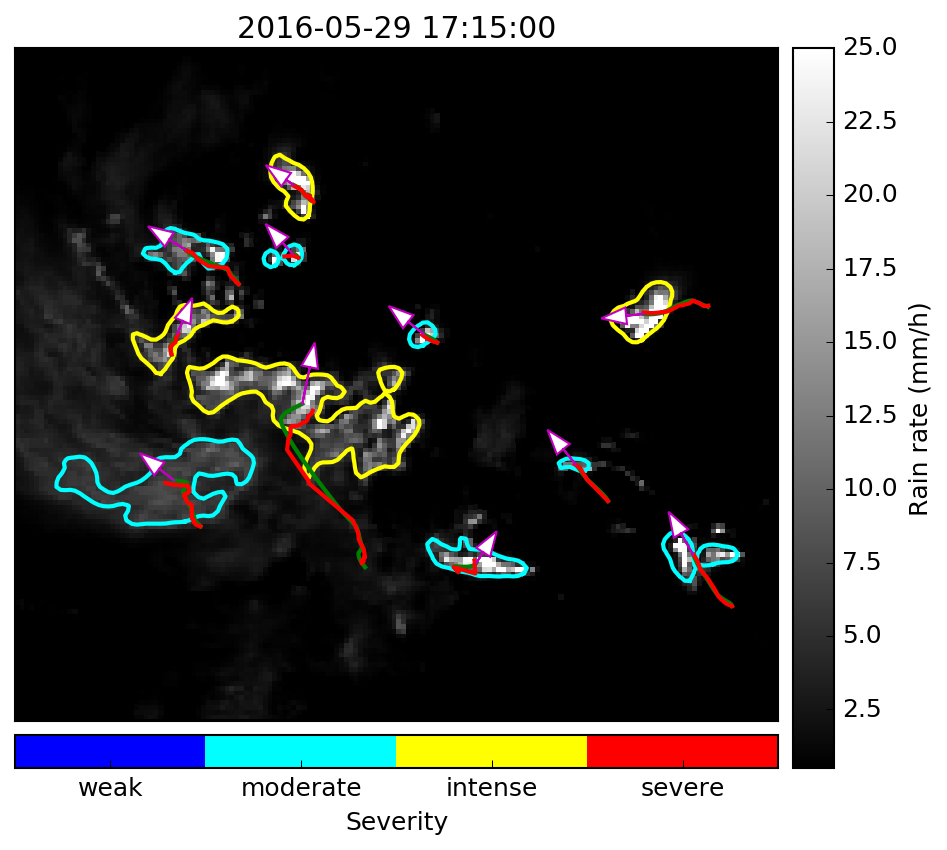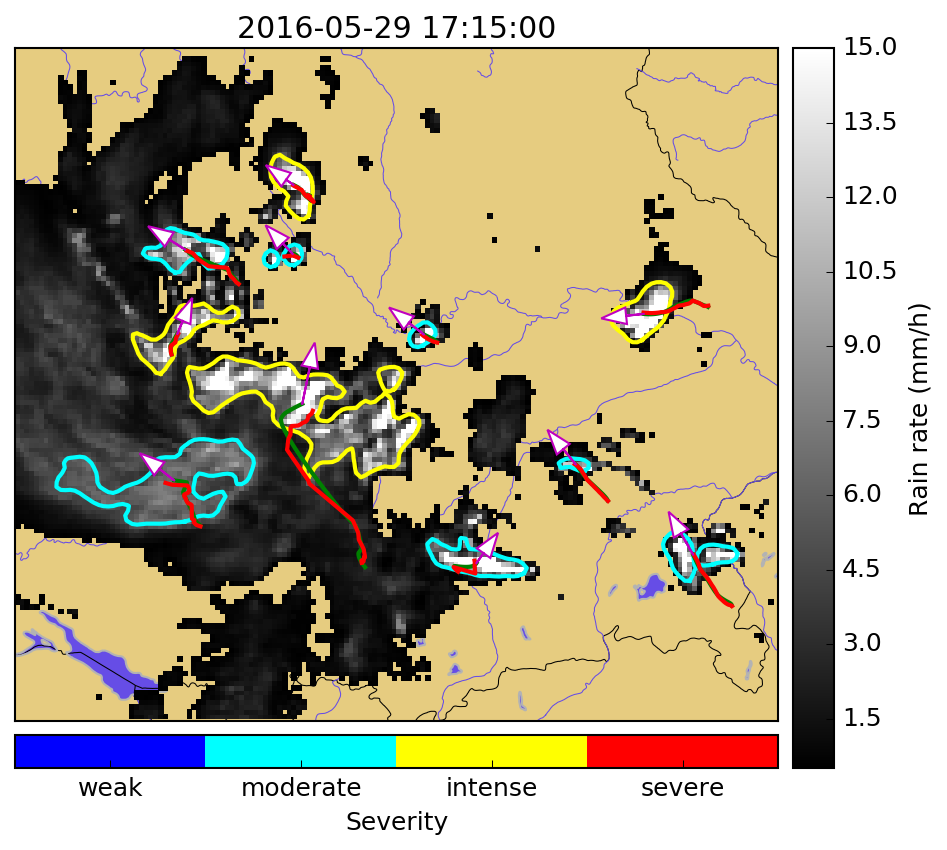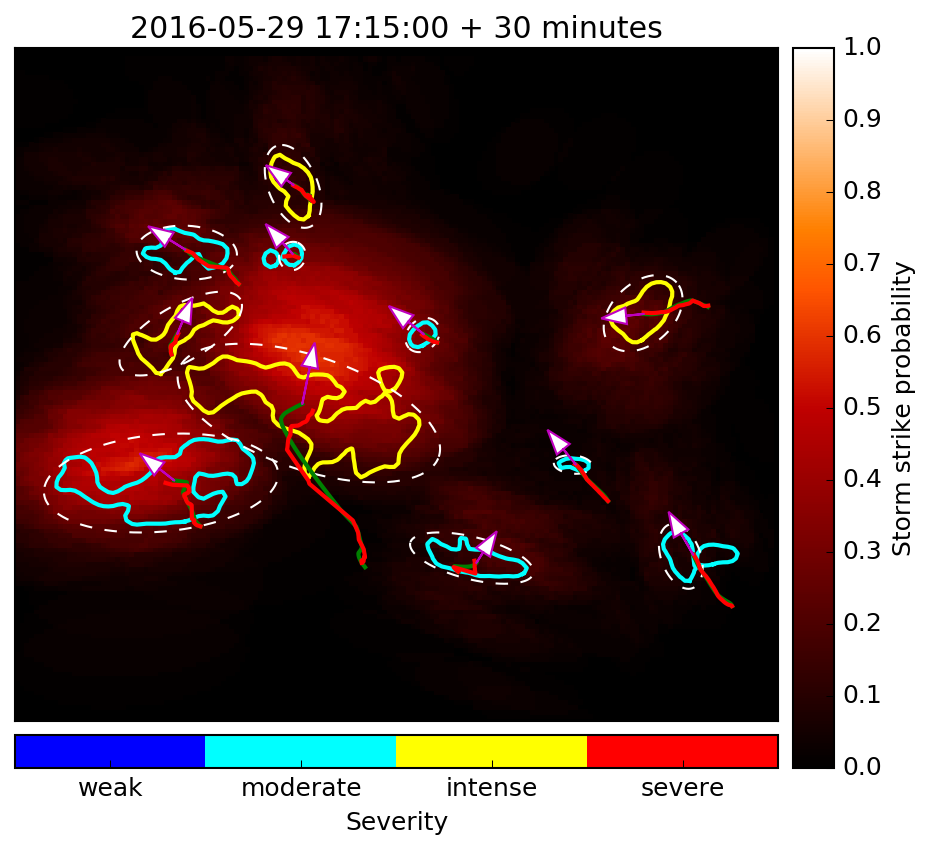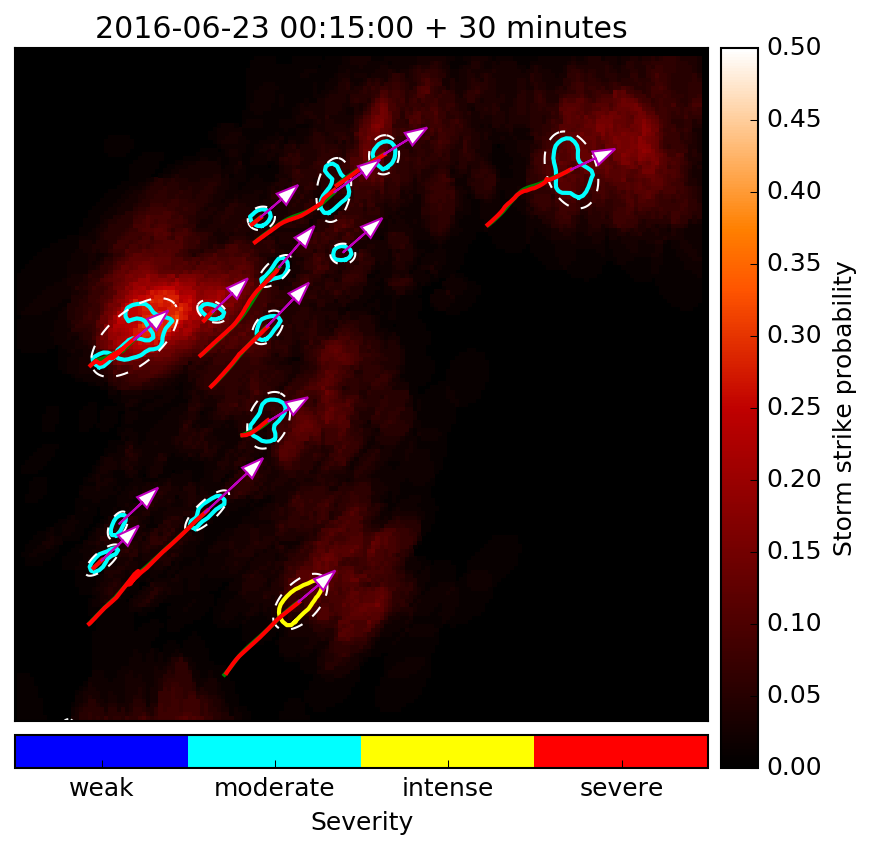Description
The algorithm identifies convective cells from radar measurements and tracks their history of past positions. Using this information, the algorithm also produces probabilistic nowcasts of their future positions.
Convective cells are defined as contiguous regions where the given rainfall intensity threshold (e.g. 5 mm/h) is exceeded. Nearby cells are clustered in order to group the cells belonging to the same convective system. This is followed by matching of the cells between consecutive time frames and computation of storm tracks (i.e. movement histories of convective cells). Smoothed tracks and velocity estimates of convective cells are produced by using a Kalman filter-based approach (Rossi et al, 2015). Finally, nowcast ensembles, and consequently, storm strike probabilities are obtained by applying the Kalman filter estimates of velocities and covariances of cell positions.
Severity classification of convective cells is done via statistically driven methods. First, the rarities of observed storm attributes (e.g. cell area and maximum rainfall intensity within the cell) are estimated from their cumulative distributions collected over a large sample. This information is then combined into a single severity index by using fuzzy logic rules (Rossi et al. 2014). If desired, this information is complemented by using external data sources such as fault messages from electricity networks.









